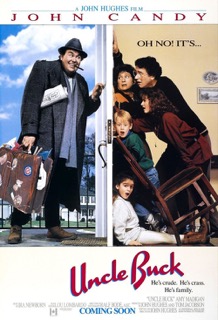10 TRENDING WORDS THAT ARE NOT IN YOUR DICTIONARY
Welcome to the first post in English written by Yentelman, the blogger who's been helping Spanish students with their English (and even their Spanish!) for quite a few years now. I was asked by my friends here at Ginseng English to adapt a few of my posts to English and—this being something that had been in my mind for some time— what could I say but "of course!" So, here we are. And, what am I going to talk about? Well, there were plenty to choose from but, considering the time of the year we're in, why not have a look at the most surprising words trending from 2017? (Note: You can read the original article in Spanish here).
Dictionary.com analysed the top 10 trending words in 2017. But not just any trending word—only those that are not currently included in the dictionary. We'll explain here what those events or movements were that made these words "go viral." Let's see!
1. Antifa
OK, as some of you may know—or may have already noticed—I'm a Spaniard. And this term, antifa, is fairly well-known in my mother tongue, as it has the same meaning, and is quite trendy as well. The Antifa movement in the USA, though, is slightly different from the one in Spain. It is a conglomerate of several anti-fascist (hence anti-fa) groups, with no formal organization nor official leader. With the antifa movement being quite active and on the rise in my home country, we Spaniards tend to believe that Anglo-Saxon countries are not so keen on them. Quite the opposite, the antifa movement is quite active overseas, and is composed of people from different ideologies, mainly anarchists, socialists and communists, but there are also liberals and social-democrats among their ranks. An odd mixture, tbh.
The main reasons for this trending word in 2017 were the numerous violent protests and demonstrations carried out during the summer in cities such as Charlottesville, Phoenix and Berkeley. The first one was particularly infamous due to the brutal confrontations between Antifa and white supremacists. Donald Trump has also been known to talk a lot about Antifa. So, there's another good reason for this word to be trending in 2017, just like our next word...
2. Covfefe
Now, there's this term I absolutely love in the English language: brain fart. That is NOT our next trending word, but it does accurately describe this and other statements from the current U.S. president. Donald Trump's famous tweet was published on May 31, 2017, and it immediately became the trending word of the moment. Half of Twitter and journalists from all over the world couldn't make up their minds as to whether it was a joke or he had really meant to send some obscure message to the reptilian government in the shadows.
Even the famous Merriam Webster dictionary—frequent fact-checker and internet troll to The Donald—was left speechless for once (see Tweet to the right).
To this day, we still don't know what the heck Donald Trump meant to say with that word. The most likely explanation is that covfefe was a typo of coverage (negative press coverage is a common phrase), but instead of clarifying, the president’s press secretary cryptically said “a small group of people know exactly what he meant.” Anyway, it was worth it if only for the LOLs.
Wakes up.
— Merriam-Webster (@MerriamWebster) May 31, 2017
Checks Twitter.
.
.
.
Uh...
.
.
.
📈 Lookups fo...
.
.
.
Regrets checking Twitter.
Goes back to bed.
3. Cuck
Short for cuckold, this term has clearly pejorative and negative connotations. A cuckold is a husband who has been cheated on. The word stems from a 13th century poem, and is derived from cuckoo, the well known bird you can find in the clock of the same name. It wasn't until 2014 that the shortened cuck started getting popular on the Internet, too as an insult aimed at a certain type of male.
Here I intended to include a pic for cuck, but it just so happens that cuck is also a porn subgenre, and my safesearch was not enabled...
According to Michael Adams, professor of linguistics at Indiana University, shortening the term so it rhymes with fuck makes it more visceral. According to Adams, the name makes reference to a man "who’s timid, deferential and lacking in toughness and conviction […] it says you’re an unnatural man, someone who can’t stand for himself […] He’s inadequate, unable to hold on to what’s his."
Donald Trump is again behind cuck becoming one of the top trending words in 2017. This is a word that you might want to avoid using. It has become the insult of choice for members of the so-called Alt-Right (another one of the most looked up words), a political group composed of racists and fascists.
4. Despacito
Yep, kids. The title of Luis Fonsi and Daddy Yankee's song is the fourth word in this list. I guess it was because of the version with that tool Justin Bieber in it. Yeah, I know I should now include the song's video-clip and all that, but I can't be arsed. I'd rather you guys listened to a couple of my favourite versions of the song. Cue video!
You may not find the definition of despacito in an English dictionary, but it translates to slowly.
5. Fidget spinner
Can you believe these things existed as far back as 1993? You wouldn't guess, judging by how recently they have become the most sought-after toy in 2017. Who knows why. Truth is, fidget spinners have become so popular among kids (and adults!) that many education institutions have decided to ban their use in class. Fidgeting is moving around restlessly, like many kids do when they’re bored at school. These spinning objects were sold as toys that can help kids to focus by using up their nervous energy.
6. Hygge
Am I an influencer yet?
No, when we talk about hygge we are not talking about the latest IKEA chair or wardrobe. This one's a Danish word, used to describe a special feeling or moment as cozy, charming, or special. Look it up in Google Images and you'll likely start puking rainbows.
It seems there's no direct translation for this term in English (there isn't one in my mother tongue either). We'd be speaking about a feeling, a sentiment or emotion. It is this lack of an exact definition and the association of the word with nice thoughts and ideas which made this a top trending word in 2017. Why? Because some sly marketing experts realized they could capitalize on this word to sell Americans basically everything, from wine to self-help books, wool sweaters, age treatment oils, idyllic holidays and even dog leashes.
7. Smize
You NEED to be Tyra Banks, otherwise it's not the same.
This is a portmanteau word created by supermodel Tyra Banks and meaning "smile with one's eyes". There's even a Wikihow guide on how to do it.
The thing is, it was actually 2009 when Tyra coined the term. Why, then, has this become a trending word in 2017? Easy: by the end of July 2017, the model introduced her 18-month-old toddler into society. Up to that point, the kid had been left outside the spotlight. So Tyra came up and said that her baby already knew how to smize, and it promptly went viral. You can see for yourself in the video below.
Yeah, I know. The kid in the pic appears to be more stoic than Steven Seagal in Under Siege 2: Dark Territory. But he is smizing! He's smiling with his eyes! For fuck's sake, can't you see?
Meh, who am I kidding. I wasn't able to look away from that dress either.
8. Turnt
An example of teenage slang that shows the influence of social networks and everything social-media related on youngsters today. This term is used to express great excitement, anticipation or enthusiasm for an upcoming event. It is, allegedly, a variant of turned. Even though it first became popular in the music world around 2013, it's been this year when teenagers have really adopted it as their own and made it a trending word.
9. Vax
Short for vaccination, this expression has been widely used in 2017, the year when the so-called anti-vaxxers have finally exhausted the patience of many governments in Europe and around the world, who have started fining those irresponsible parents who decide not to vaccinate their children.
Using unfounded and outlandish arguments such as the one in the gif above ("vaccines cause autism in children"), the anti-vax movement is behind the recent outbreak of diseases such as measles, mumps or polio in many countries who had successfully managed to eradicate them long ago. This link will take you to a detailed map of the evolution of these diseases, so you can see what I'm talking about.
Just so you know, I don't usually discuss my beliefs openly on such topics as religion, politics, sports or adding chorizo to paella. But I'll be crystal clear this time: If you are an anti-vaxxer and my comments offend you, I don't give a frag.
10. Welp
Let's get this over with already, shan't we? The last top trending word of 2017 is another teenage slang term you can frequently find in that new agora of culture and knowledge: Twitter (yes, I'm being sarcastic). It is said that welp is the oral way of expressing what is implied by a shrug. Actually, it is just an informal synonym for well when conveying surprise or shock at something, as well as an interjection to start a conversation or introduce a new sentence. For example:
"Welp, what have we here?" Star Wars reference nº 4,815,162,342
Its use is becoming more and more popular, to the point that Merriam Webster (yes, the guys who bust Trump's stones) is thinking about including the term among their pages. However, until that happens, it is still little more than internet slang, even if it's older than most people are aware of.
So that's it. I hope you liked the post and, just in case… is there a word you have been reading or listening to a lot this year which has not been included here? Any you've been using a lot lately while not being sure if you're pulling a Donald Trump? Don't be shy and let us know!


































